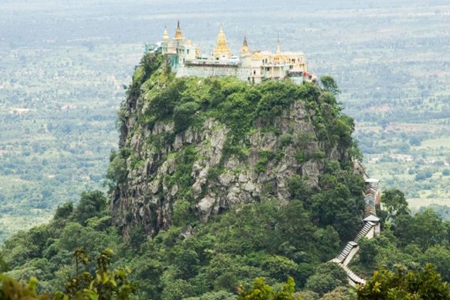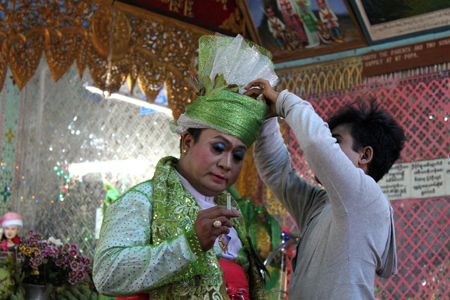Mount Popa is a vast volcanic mountain that overwhelms the flat landscape only one hour’s drive southeast of Bagan. On the peak are 2 pagodas situated half a mile apart. The mountain is thickly vegetated and a number of hermits find living here with the faithful bringing rice to them at the weekends. To the west is situated the Taung-lei (Little mountain), an offshoot of the volcano, the abode of Mahagiri, the most important of all the nats.

Between the two mountains amidst various monasteries is a large Nat-cin built under the sponsorship of U Nu, Burma’s Prime minister in the 1950s. It contains the statue of Mahagiri and his sisters carved from Teak tree trunks. The originals were washed down the so many centuries ago were of saga-pin (frangipani), four and a half feet high, the size of the present ones. Later, at the request of the nats gold heads were added, thus conferring the rank of princes of the royal blood. In 1785, during Bodaw Phaya’s reign, new ones were molded and new heads were added. During British rule, the heads were transferred to the Bagan museum and then to Bernard Library at Rangoon. The procession of these heads to the altar became an important tradition at each year’s festival.

In ancient times the annual festival was marked by sacrifices of white buffalos, oxen, and goats in honor of the nat. These sacrifices have now been banned from the festival. The main festival is held from the full moon of December to the 6th day of its waning. There is also a more minor celebration of the “Departure for China” when Anawrahta’s proclamation to the army about to go off and conquer China in order to capture the Buddha’s tooth is readout.
